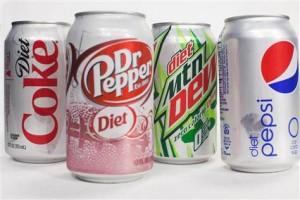 Given all the concerns about drinking sugary beverages, let’s take a look at who is consuming diet drinks across the U. S.
Given all the concerns about drinking sugary beverages, let’s take a look at who is consuming diet drinks across the U. S.
The following information, posted by the Centers for Disease Control , comes from the National Health and Nutrition Examination Survey, 2009-2010 describes the consumption of diet beverages among the U.S. population during 2009-2010 by sex, age, race and ethnicity, and income, and details trends in diet drink consumption from 1999-2000 through 2009-2010.
About 20% of the U.S. population aged 2 years and over consumed diet drinks on a given day during 2009-2010. The percentage consuming diet drinks was similar for females and males at all ages except among adolescents aged 12-19. The percentage consuming diet drinks increased with age for both males and females. On a given day, about 3% consumed some but no more than 8 fluid ounces (fl oz) of diet drinks, and 11% consumed 16 fluid ounces or more.
Although 15.3% of non-Hispanic white children and adolescents consumed diet drinks, only 6.8% of non-Hispanic black and 7.5% of Hispanic children and adolescents consumed any diet drink on a given day during 2009-2010. Similarly, 27.9% of non-Hispanic white adults consumed any diet drink on a given day compared with 10.1% of non-Hispanic black and 14.1% of Hispanic adults.
The percentage of higher-income persons who consumed diet drinks on a given day was greater than that of lower-income persons. A total of 18.3% of children and adolescents living in households with income at or above 350% of the poverty line consumed diet drinks, compared with 11.5% of those living between 130% and 350% of the poverty line, and 8.0% of those living below 130% of the poverty line. A similar pattern was observed for adults: Although 32.6% of adults living at or above 350% of the poverty line consumed diet drinks, only 20.1% of those living between 130% and 350% of the poverty line, and 12.2% of those living below 130% of the poverty line, consumed diet drinks.
Summary:
Overall, the percentage consuming diet drinks was higher among females compared with males. Diet drink consumption differed by age, race and ethnicity, and income. For example, the percentage of non-Hispanic white children and adults who consumed diet drinks was higher than those for non-Hispanic black and Hispanic children and adults, and the percentage of higher-income persons who consumed diet drinks was higher than that for lower-income persons.
The percentage of females and males who consumed diet drinks increased between 1999 and 2010 and was mirrored by a decrease in consumption of added sugar calories in regular soda over a similar time period. These results suggest that sugar drinks may have been replaced with diet drinks during that time.
Although substituting sugar drinks with diet drinks may promote weight loss in the short term it is unclear if long-term consumption leads to weight loss, weight maintenance, or even weight gain.



